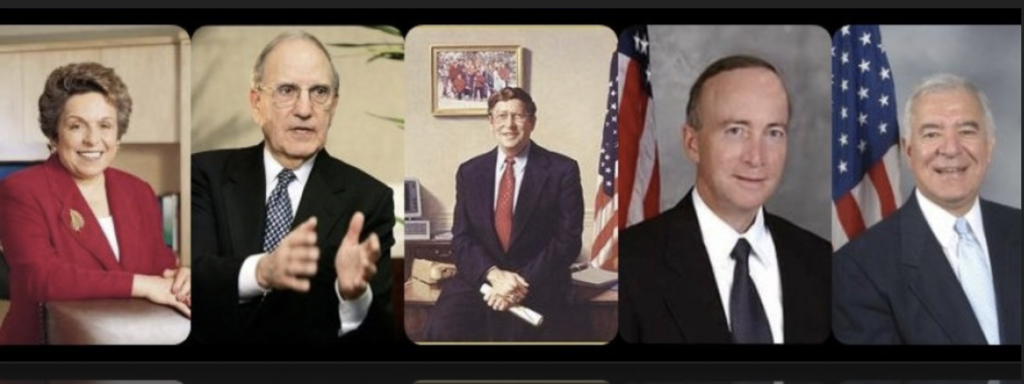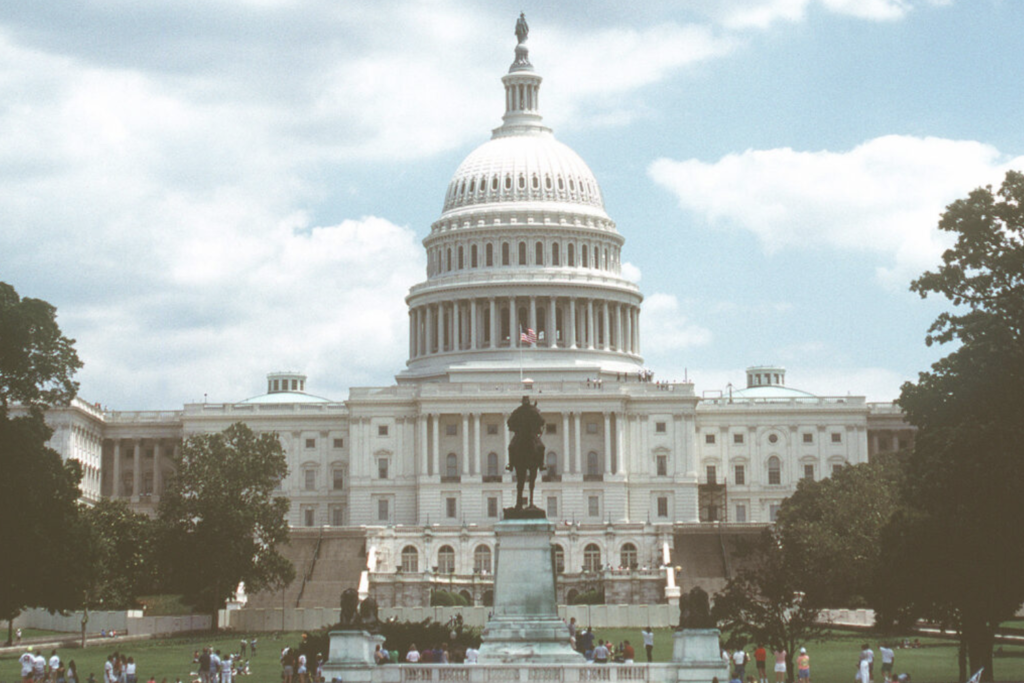Arab Americans and Political Affiliation

By Liam Nagle / Arab America Contributing Writer
With the upcoming presidential election in the United States – and the ongoing War in Gaza which continues with U.S. support – it would be understandable to wonder about the political history of the stances held by Arab Americans. Although considered a more left-leaning, Democrat-voting group, this wasn’t always the case. As recently as 2000, Arab Americans had been voting for the Republican Party. Given this, what’s the history of Arab American politics and political affiliation within the United States?
Early History and the Cold War

The first wave of Arab immigration into the United States started in the late 1800s and early 1900s, with a large number fleeing persecution by the Ottomans. However, the number that arrived was politically insignificant – they weren’t a large enough force to be a defining group within the United States elections. It’s also difficult to decipher the political opinions of Arab Americans at this time, as debates over whether or not Arabs should be considered “white” resulted in their political beliefs sometimes being recorded within the “white” category.
However, Arab Americans started becoming a force in American politics after World War Two, towards the beginning of the Cold War between the United States and the Soviet Union. Although Arab American voting patterns and political affiliation were still difficult to pinpoint, we might be able to get an idea through the Arab American political figures that started coming to power.
The first Arab American to hold a federal office was George A. Kasem, a Lebanese-American Democrat who represented California in the House of Representatives from 1959 to 1961. However, after his failure to win reelection in 1960, it would be a little while before another Arab American came to federal office. In 1967, the Lebanese-American Democrat Abraham Kazen was elected to the House of Representatives to represent Texas – and from there, a lot more Arab Americans started winning political office.
Throughout the 1970s, six Arab Americans won elections in the U.S. Congress – all from the House of Representatives, although one of them would eventually run and win a Senate seat instead. Interestingly, all but one of them were Democrats. Given this, it may signify that the majority of Arab Americans supported the Democratic Party during the 1970s – perhaps due to the Democratic Party’s support for the Civil Rights Movement in the 1960s. Many of these representatives also served into the 1980s. However, in spite of the number of Arab Americans winning federal offices in the 1970s – and continuing to win reelection into the 1980s – only one new Arab American would be elected to the U.S. Congress in 1980.
Rise of Arab American Republicans in Congress

While Arab American representatives weren’t doing as well in the 1980s as they were in the 1970s, this began to change again in the 1990s. In 1993, after the end of the Cold War, two Arab Americans won seats in the U.S. Congress for the first time since 1981. Although they were both Democrats, the remainder of the 1990s showed a general shift in the party affiliation of Arab American representatives.
In 1995, two Arab American Republicans won seats in the U.S. Congress for the first time since 1973. From there, pro-Republican attitudes among Arab American representatives in Congress seemed to rise; out of eight Arab Americans elected between 1990 and 2001, four of them were Republicans. This trend continued in the post-9/11 atmosphere – between 2001 and 2015, out of the eight Arab Americans elected to Congress, seven were Republicans. However, although Arab American representatives in Congress were Republican, we can now investigate whether or not this was reflective of the Arab American populace in general.
Late 1990s and Early 2000s
It appears that, during the 1990s, the pro-Republican attitudes of Arab American representatives were mirrored by pro-Republican Arab American voters. Politico attributes this to the Arab American community being “strongly entrepreneurial, socially conservative and fiscally cautious”, which naturally aligned with the Republican Party of that period (Kaffer, 2016).
Additionally, a poll conducted by Zogby International reflected that 52% of Arab Americans were anti-abortion, 74% supported the death penalty – in addition to 76% were in favor of stricter gun control laws, and 86% supported the creation of a Palestinian state. Whatever the reason, the Arab American support for Republican candidates continued into the 2000 U.S. presidential election. The Republican George W. Bush would win the presidency, with Politico stating that as much as 72% of Arab Americans voted for him over Democrat Al Gore (Kaffer, 2016).
However, although an increased number of Republican Arab Americans would win in the U.S. Congress, it appears that these representatives didn’t reflect the views of the general Arab American populace. After the 9/11 Attacks and the beginning of the War On Terror, the views of Arab Americans shifted dramatically. In the 2004 presidential election, 85% of Arab Americans voted for Democrat John Kerry over George Bush (Kaffer, 2016). By 2007, a Zogby poll reflected that 62% of Arab Americans were Democratic, with only 25% being Republicans (Rubeiz, 2008). The reasons for this have largely been attributed to the War on Terror, with many Arab Americans seeing the wars as needlessly destructive and unjust. The rise in Islamophobia and Anti-Arab racism could also have contributed to this political shift.
Rise of Arab American Democrats
This dramatic shift in the political views of Arab Americans wasn’t reflected in the U.S. Congress until 2017. However, in 2017, the shift was enormous. Similar to the elections that took place in the 1970s, the majority of new Arab American representatives to Congress were Democrats; out of seven newly-elected Arab Americans, six were Democrats.
Recent polls have continued to demonstrate the high number of Arab Americans voting Democrat over Republican. In April of 2023, a poll conducted by the Arab American Institute showed that 40% of Arab Americans were Democrats, 24% were Republicans, and 35% identified as ‘other’ (Zogby, 2023). While these opinions could easily have changed since the beginning of the War in Gaza, given that the Republicans also support Israel’s actions in Gaza, it seems doubtful that Arab Americans would start voting for the Republicans. Nevertheless, the history of the political affiliations of Arab Americans goes to show an interesting dynamic – from pro-Democrat, to pro-Republican, to pro-Democrat again. Who knows where it could go from here?
Works Cited:
Rubeiz, G. (2008, February 12). US elections through Arab American eyes. Common Ground News Service. https://web.archive.org/web/20141210203231/http://www.commongroundnews.org/article.php?id=22587&lan=en&sid=1&sp=0
Kaffer, N. (2016, August 3). How the GOP lost Arab-American voters – politico magazine. Policito Magazine. https://www.politico.com/magazine/story/2016/08/arab-american-muslim-vote-2016-trump-bush-dearborn-detroit-michigan-214134/
Zogby, J. (2023, June 4). How Arab Americans will vote in 2024: EMS. Ethnic Media Services. https://ethnicmediaservices.org/news-exchange/how-arab-americans-will-vote-in-2024/
Visit our blog here!









